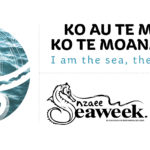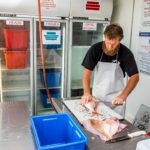As my time as Chair of the Forum comes to an end, I am proud of our progress and encouraged by what I see out there in our communities around the Hauraki Gulf Marine Park. There is now widespread commitment to environmental restoration and protection of the Gulf, such as the massive efforts being put into pest eradication, weed control and replanting on dozens of the islands in its waters. Almost all but the two largest islands are now pest free, providing a haven for one of the richest sea and land bird regions in the world. “Pest Free Waiheke”, now underway, will add to this improving picture and is a good example of funding for a community project by a consortium of local and central government and private funders.
I believe the many Trusts devoted to restoring the natural environment on Gulf islands should consciously add attention to the surrounding waters to their objectives. Combined, they could make a major contribution to improving habitats in the surrounding waters. The Neureuter family, owners of the Noises Islands, is showing the way on this by actively seeking to secure meaningful protection around the islands. They are facilitating visits to the Noises by a wide range of people and organisations to demonstrate the opportunities for restoration and are working with iwi, researchers and activists to document the current state of habitats and marine life around the Noises to provide a basis for measuring the effects of protection when it is granted.
There are also many and varied shellfish and marine habitat restoration projects being undertaken but these are as yet small in scale. Over the past year I have attended many meetings of organisations committed to these efforts and have been in awe of the commitment and persistence of their members. Their efforts need to be bolstered financially. There is a big opportunity here for philanthropists to fund community efforts, supported by enthusiastic academics and professional environmental organisations. My personal hope is for a philanthropic contribution of $5 million per year for 20 years to shellfish-bed restoration.
Meanwhile, regional and district councils in the Gulf’s catchments are showing increasing commitment to improving the state of the Gulf through efforts to clean up the waters and waste materials flowing into it and, more recently, cleaning up or strengthening the shoreline. Many of the land-based activities have the active support of, or are being led by, the Department of Conservation.
Many organisations and individuals involved in working for restoration of the Gulf have been further energised by the adoption of the Forum’s two “Big Goals”. This is very gratifying. And timely. These goals are focused on restoring marine habitats to enable marine life to regain its ability to restore the kind of abundance it used to have. Marine habitat restoration work has had less attention compared to land based, “in view”, activities and needs a big spur going forward.
The establishment of the Ministerial Advisory Group on the Sea Change Tai Timu Tai Pari Marine Spatial Plan completed in May 2017 should ensure there is more attention given to the recommendations in that Plan by central government. In due course, resulting actions by central government will complement the work already being undertaken by regional and local government in response to that report. Fisheries NZ is already beginning to commit to the improvements sorely needed and I trust they will begin to be active in facilitating strategic protection areas, reducing the impact of habitat destroying fishing methods, and managing fish stock levels more proactively in the Gulf than has been evident over the past 3-4 decades.
The Sea Change report reminded us that the many iwi with a direct connection to the Hauraki Gulf were and are involved in Treaty negotiations and that settlements will enable them to focus on greater involvement in the management of the natural resources of its waters. The full involvement of iwi will be essential if we are to achieve the meaningful protection needed to meet the goals we have set and their aspirations for the Gulf. There is therefore a need for much more active engagement with the relevant iwi. Deputy Chair Moana Tamaariki-Pohe has been working with Te Puni Kōkiri and tangata whenua representatives who are members of the Forum to improve this interaction and it forms a major part of our recently adopted Communications Strategy. In that context, we will ensure the next State of the Environment Report from the Forum, due to be released on its 20th anniversary on 27 February 2020, will systematically incorporate the Te Ao Māori perspective throughout.
All that said, as I looked over the key achievements of the Forum since its inception in this year’s annual report, I note that the aspirations expressed for the Hauraki Gulf Marine Park Act in the year 2000 still fall a long way short of what’s needed. There are lots of good reasons for this and I have no wish to imply criticism of any individual or organisation involved in the Forum or the Gulf. I merely note that we must make the most of the quite significant new opportunities coming up in the next few years, such as the prospective commitment from central government to the Sea Change recommendations; the Americas Cup defence; Te Matatini in 2021, and so on. Through these, we can highlight the need for more and more effective action to restore the fantastic taonga that is Tīkapa Moana in a reasonable timeframe.







